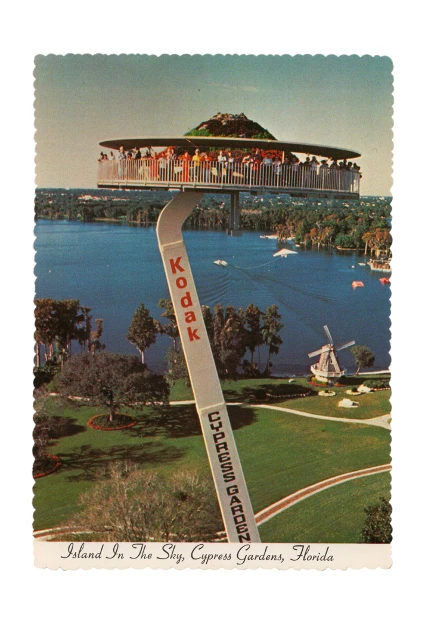
Island in the Sky, Cypress Gardens, Florida, postcard, n.d.
Held on 19 sep 2024
The sixth edition of Art and Tourism Imaginaries, an encounter series organised with the research group TURICOM, sets forth a study which explores the phenomenon of postcards and their impact on shaping the themes and stereotypes which have formed the collective imaginary of geographies, peoples and consumer habits in contemporary visual culture.
The use of postcards became widespread in the late nineteenth century, coinciding with the dawn of mass consumer culture. Their central qualities of speed, concision and cheapness chimed with a paradigm of thought shaped by utilitarianism. They came into being as commercial or personal textual notifications which tended to be very short and became standardised owing to their public nature, yet the introduction of the image in the early twentieth century denoted a relinquishment of their initial functional austerity and their transformation into a fully modern product. On a small scale, the development of the tourist postcard corresponds to the development of the capitalist production system as the format gradually faded away as a simple messaging item to become a hybrid picture card encompassing at once the attraction to the place it showed and a souvenir: a private message that draws from a commercial and advertising rhetoric, thereby assuming a mainstream quality. Halfway between media and a visual commodity, between an abbreviated letter and a standardised panorama, the postcard is a choice object for understanding how the cultural dynamics of stereotype are created and perpetuated through the way in which they often represent idealised and standardised images of places and situations. As a commodity, the postcard is laden with the dominant discourse of modernity, according to which the cost of progress means a loss of authenticity, a quality that is demoted to the outside or the distant, to far-flung places or a past time. Therefore, the postcard is a striking reflection and agent of this modernising project as it is specifically equipped to build cultural stereotypes and the nostalgic invocation of lost authenticity.
Setting out from this premise, the activity explores the postcard as a vehicle for and manufacturer of clichés from the perspective of authenticity, a key concept for consumer discourses and increasingly for politics. Inside a context of culture wars based on a stereotyped rhetoric, on clichés and short messages, this humble newsstand memento could possibly teach us valuable lessons on the relationships between the stereotyped and the authentic.
This is the final encounter in a six-year collaboration between the Museo Reina Sofía and research group TURICOM which has given rise to critical reflections on the tourist subject, leisure time and contemporary art.
Acknowledgements
Organised by
Museo Reina Sofía y TURICOM. La modernidad paradójica, PGC2018-093422-B-I00
Collaboration
illycaffèAgenda
jueves 19 sep 2024 a las 17:00
Presentation
—By José Díaz Cuyás
jueves 19 sep 2024 a las 17:10
Real Colour. Two Hundred and Forty-Three Postcards by Georges Perec
—By Julián Díaz Sánchez
“Two Hundred and Forty-Three Postcards in Real Colour” (1978) is a text by Georges Perec that explores the notion of authenticity by way of imageless postcard texts that can evoke an almost ideal tourist landscape. The intervention sees Julián Díaz Sánchez contrast Perec’s notion of authenticity with that of Gilles Lipovetsky, who demonstrates the expansion of the concept of a Disneyfied world.
jueves 19 sep 2024 a las 17:25
Greetings from. On Different Uses of the Postcard in Contemporary Artistic Practices
—By Rogelio López Cuenca
Stretching beyond its presence in the Mail Art tradition, the postcard has been employed by contemporary artists to critically or parodically allude to its role inside tourist culture and tap into its communicative possibilities. Therefore, this session introduces such examples, showing the diversity of strategies and objectives in either its specific use or in combination with other media. For instance: Marina Seascape (1998) and Malagana (2000), by Rogelio López Cuenca; ¡Desengánchate!N and ¡Apostata! (1991), by Agustín Parejo School; ¡Visite Ciudad Juárez! (2003-2011), by Ambra Polidori; Zaidín Monumental (2000), by Javier Longobardo; Paisatges Fragmentats (2017), by Laura Marte; and Conflictes Urban (2002), by Arquitectes Sense Fronteres - Plataforma veïnal contra l’especulació.
jueves 19 sep 2024 a las 17:40
Postcards in Art. Inciting Stereotypes
—By José Díaz Cuyás
Since the early twentieth century, the postcard has been a paradigm of the mass-culture stereotype. In its artistic use, the postcard and platitudes, en masse, play a transgressive role, akin to works within Surrealism and Pop Art. From the perspective of rhetoric, the value of authenticity we attribute to transgression lies in the very act of violating, when it is perceived as an unmasking. In this talk, José Díaz Cuyás invites us to ask questions around the provocative, elusive power of stereotypes, particularly today, when clichés have become algorithmic.
jueves 19 sep 2024 a las 17:55
Postcard Fictions
—By Cristina Arribas and Carmelo Vega
What makes Spanish tourist boom postcards so different and attractive? Through two exhibition projects — Diálogo de postales (Postcard Dialogue, Museo de Historia y Antropología de Tenerife, 2023–2024) and Discursos postales (Postcard Discourses, Centro Andaluz de la Fotografía, 2024) — and from a perspective on the theory of the tourist image, this talk puts forward keys to resolving such an enigma. The true value of postcards lies not only in their vast structural and visual power as contemporary flash fictions of tourism, but also primarily in their capacity to create formal and conceptual solutions that defy all conventional logic. Far from documenting the phenomenon they illustrate, postcards build their own idiosyncratic fictional realities.
jueves 19 sep 2024 a las 18:10
Break
jueves 19 sep 2024 a las 18:30
Presentation of Casa Planas
—By Alelí Mirelman and Marina Planas
The Casa Planas project is a collective, non-profit organisation founded by artist Marina Planas in 2015 in response to the urgent need for an interdisciplinary centre for contemporary creation and the interpretation of tourism on the Balearic Islands. Alelí Mirelman is a project director at Casa Planas and the coordinator of the COSTA Tourist Image Observatory.
jueves 19 sep 2024 a las 18:50
Review and Debate
—Moderated by Alicia Fuentes
Participants
Cristina Arribas
works as an architect and urban planner for Badalona Council, and is also a lecturer in the Department of Theory and History at the Escola Tècnica Superior d'Arquitectura de Barcelona (ETSAB). Her most recent publications most notably include the essays “El nuevo paisaje turístico español a través de las tarjetas postales de los años 60”, in Sobre, no. 5 (2018) and “La puesta en escena del paisaje turístico español en el boom desarrollista”, in La ciudad en el cine (Asimétricas, 2022), and the book Greetings from the USA. Saludos desde España (Concreta, 2023).
José Díaz Cuyás
is a professor of Aesthetics and Art Theory at the University of La Laguna. He also coordinates the TURICOM group, and was previously the director of Acto ediciones. His most recent publications include Encuentros salvajes: arte, consumo y turismo caníbal (Concreta, 2022), which includes his text “Arte, consumo y transgresión caníbal: a propósito de Yves Klein, Tennessee Williams y el cine exploitation”.
Julián Díaz Sánchez
is a lecturer in Art History at the University of Castilla-La Mancha (UCLM). He is the author of, among other works, Políticas, poéticas y prácticas artísticas. Apuntes para una historia del arte (Catarata, 2009), La idea de arte abstracto en la España de Franco (Cátedra, 2013) and Pensar la historia del arte. Viejas y nuevas propuestas (University of Zaragoza, 2021).
Alicia Fuentes Vega
is a lecturer in the Department of Art History at the Complutense University of Madrid, where she jointly directs the research group IMAGINARIOS and has coordinated, since 2023, the MA in Contemporary Art History and Visual Culture (UCM, UAM and Museo Reina Sofía). Her publications include articles in academic journals such as the Journal of Tourism History, Iberoamericana and Art in Translation, and she is the author of Bienvenido, Mr. Turismo. Cultura visual del boom (Cátedra, 2017).
Rogelio López Cuenca
is an artist who combines visual art methods and customary processes of literature and social sciences. One of his main working strands deals with the representation and construction of the identity of the other, in relation to individual and collective identity in the West. He received Spain’s National Award for Plastic Arts in 2022 and has held solo shows in Es Baluard (2021), the Museo Reina Sofía (2019), Sala Alcalá 31 (2016), IVAM (2015) and La Panera (2012). His work is also part of the Museo Reina Sofía, MACBA, ARTIUM and Banco de España collections.
Casa Planas
is a collective organisation founded by the artist Marina Planas in 2015 in Palma de Mallorca. As an independent, non-profit project, it came into being in response to the need for an interdisciplinary centre for contemporary creation and the interpretation of tourism on the Balearic Islands. Its collection includes the biggest photographic archive in Europe on mass tourism.
Más actividades
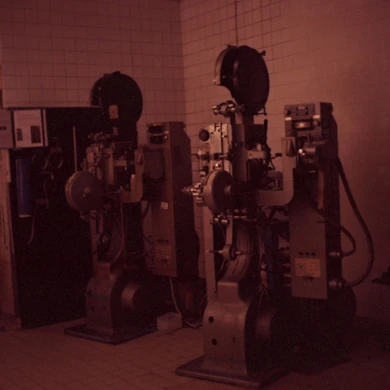
Long Live L’Abo! Celluloid and Activism
4, 5, 6 DIC 2025
L’Abominable is a collective film laboratory founded in La Courneuve (Paris, France) in 1996. It came into being in response to the disappearing infrastructures in artisan film-making and to provide artists and film-makers with a self-managed space from which to produce, develop and screen films in analogue formats such as Super 8, 16mm and 35mm. Anchored in this premise, the community promotes aesthetic and political experimentation in analogue film opposite digital hegemony. Over the years, L’Abominable, better known as L’Abo, has accompanied different generations of film-makers, upholding an international movement of independent film practices.
This third segment is structured in three sessions: a lecture on L’Abo given by Pilar Monsell and Camilo Restrepo; a session of short films in 16mm produced in L’Abo; and the feature-length film Une isle, une nuit, made by the Les Pirates des Lentillères collective.
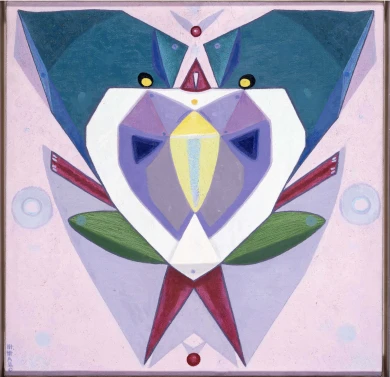
Estrella de Diego Lecture. Holding Your Brain While You Sleep
Wednesday, 3 December 2025 – 7pm
Framed inside the Museo Reina Sofía’s retrospective exhibition devoted to Maruja Mallo, this lecture delivered by Estrella de Diego draws attention to the impact of the artist’s return to Spain after her three-decade exile in Latin America.
Committed to values of progress and renewal in the Second Republic, Mallo was forced into exile to Argentina with the outbreak of the Civil War and would not go back to Spain to settle definitively until 1965 — a return that was, ultimately, a second exile.
Mallo saw out her prolific artistic trajectory with two impactful series: Moradores del vacío (Dwellers of the Void, 1968–1980) and Viajeros del éter (Ether Travelers, 1982), entering her most esoteric period in which she drew inspiration from her “levitational experiences” of crossing the Andes and sailing the Pacific. Her travels, both real and imaginary, became encounters with superhuman dimensions.
In parallel, her public persona gained traction as she became a popular figure and a key representative of the Generation of ‘27 — the other members of which also started returning to Spain.
This lecture is part of the Art and Exile series, which seeks to explore in greater depth one of the defining aspects of Maruja Mallo’s life and work: her experience of exile. An experience which for Mallo was twofold: the time she spent in the Americas and her complex return to Spain.
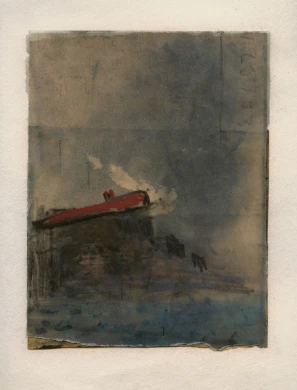
Juan Uslé. That Ship on the Mountain
Tuesday, 25 November 2025 – 7pm
Ángel Calvo Ulloa, curator of the exhibition Juan Uslé. That Ship on the Mountain, engages in conversation with artist Juan Uslé (Santander, 1954) in the Museo’s Auditorium 400 to explore in greater depth the exhibition discourse of this anthological show spanning four decades of Uslé’s artistic career.
The show casts light on the close relationship Uslé’s work bears to his life experiences, establishing connections between different stages and series which could ostensibly seem distant. Framed in this context, the conversation looks to explore the artist’s personal and professional journey: his memories, experiences of New York, his creative process, conception of painting, and ties with photography and film, and the cohesiveness and versatility that characterise his art. Key aspects for a more in-depth understanding of his artistic sphere.
The conversation, moreover, spotlights the preparatory research process that has given rise to this exhibition to grant a better understanding of the curatorial criteria and decisions that have guided its development.
These inaugural conversations, part of the main working strands of the Museo’s Public Programmes Area, aim to explore in greater depth the exhibition narratives of the shows organised by the Museo from the perspective of artists, curators and specialists.
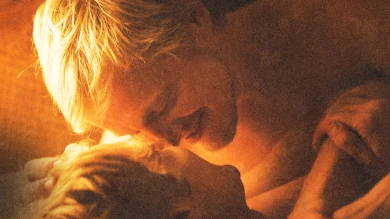
The Films of Ira Sachs
From Thursday, 20, to Sunday, 23 November 2025 – Check times
The International Festival of LGBTQIA+ Cinema in Madrid (QueerCineMad) and the Museo Reina Sofía come together to organise a retrospective on Ira Sachs (USA, 1965), a pivotal film-maker in contemporary queer cinema whose work has charted, across three decades, the affects, losses and resistance that traverse the lives of the LGBTQIA+ community. Sachs is the creator of a filmography which conceives of New York as the emotional architecture of his narratives, and as a space of memory, struggle and community. This programme includes the premiere of his most recent film, Peter Hujar’s Day (2025), in Madrid, with the film-maker in attendance in three of its sessions.
Sachs has filmed, with delicacy and conviction, the tensions between desire, precarity and belonging, from his first feature-length film, The Delta (1996), set on the margins of the Mississippi, to Love Is Strange (2014), where a gay couple have to give up their Manhattan apartment after marrying. In Keep the Lights On (2012) intimacy becomes a battleground in confronting addiction and neglect, while Lady (1994), a short film on the solitude of an elderly woman in New York, anticipates his sensibility for bodies made invisible. Last Address (2010) is a silent homage to queer artists who died from AIDS/HIV-related illnesses — Robert Mapplethorpe, Keith Haring, David Wojnarowicz — whereby the façades of the buildings they lived in become intimate monuments, the remnants of history erased through windows. Thus, Ira Sachs’s body of work engages in a profound dialogue with film-makers such as Rainer Werner Fassbinder in situating the gaze at the centre of bodies, in exploring the complexity of the struggle between himself and his films. Further, his practice reverberates through New Queer Cinema, a 1990s film movement that transformed the representation of sexuality from difference.
The director’s presence in Madrid, coupled with the premiere of his new work, makes this film season an event which extols both his career and his form of gazing and inhabiting the city from the queer, the community and the poetic. In these times of eviction and urban homogenisation, Sachs’s film-making reminds us that the neighbourhood can also be a gesture of care, a form of resistance, a future promise.
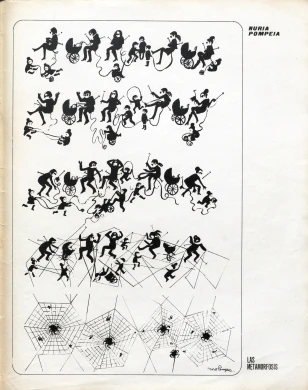
Crossed Vignettes
Friday, 21 November 2025 – Check programme
The Crossed Vignettes conference analyses the authorship of comics created by women from an intergenerational perspective and draws from the Museo Reina Sofía Collections. Across different round-table discussions, the programme features the participation of illustrators Marika, Carla Berrocal, Laura Pérez Vernetti and Bea Lema and researchers Viviane Alary, Virginie Giuliana and Elisa McCausland.
The aim of the encounter is twofold: to explore in greater depth the different forms in which women comic book artists have contributed to developing a counterculture; namely, the appearance of ruptures, reformulations and new genres within the ninth art. And to set up a dialogue which ignites an exploration of genealogies linking different generations of artists.
Moreover, the activity is put forward as a continuation to the exhibition Young Ladies the World Over, Unite! Women Adult Comic Book Writers (1967–1993) and the First International Conference on Feminist Comic Book Genealogies, held in April 2024 at the Complutense University of Madrid.
In redefining the visual narratives of the comic book and questioning gender stereotypes in a male-dominated world, women comic book writers and artists have impelled greater visibility and a more prominent role for women in this sphere. The study of intergenerational dialogue between female artists past and present enables an analysis of the way in which these voices reinterpret and carry the legacy of their predecessors, contributing new perspectives, forms of artistic expression and a gender-based hybridisation which enhances the world of comics.
The conference, organised jointly by the Museo Reina Sofía and Université Clermont Auvergne/CELIS (UR4280), features the participation of the Casa de Velázquez and is framed inside the context of the CALC programme The Spanish Artistic Canon. Between Critical Literature and Popular Culture: Propaganda, Debates, Advertising (1959–1992), co-directed by Virginie Giuliana. It is also the outcome of the projects Horizon Europa COST Actions iCOn-MICs (Comics and Graphic Novels from the Iberian Cultural Area, CA19119) and COS-MICs (Comics and Sciences, CA24160).
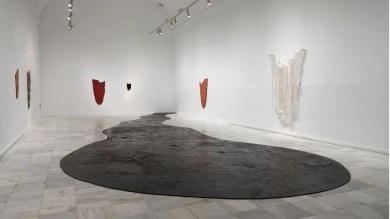
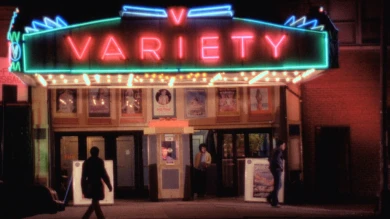
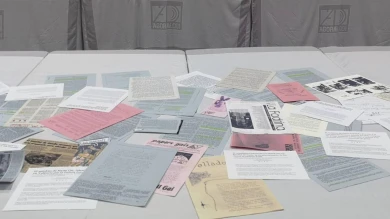
![Miguel Brieva, ilustración de la novela infantil Manuela y los Cakirukos (Reservoir Books, 2022) [izquierda] y Cibeles no conduzcas, 2023 [derecha]. Cortesía del artista](https://recursos.museoreinasofia.es/styles/small_landscape/public/Actividades/ecologias_del_deseo_utopico.jpg.webp)
![Ángel Alonso, Charbon [Carbón], 1964. Museo Reina Sofía](https://recursos.museoreinasofia.es/styles/small_landscape/public/Actividades/perspectivas_ecoambientales.jpg.webp)